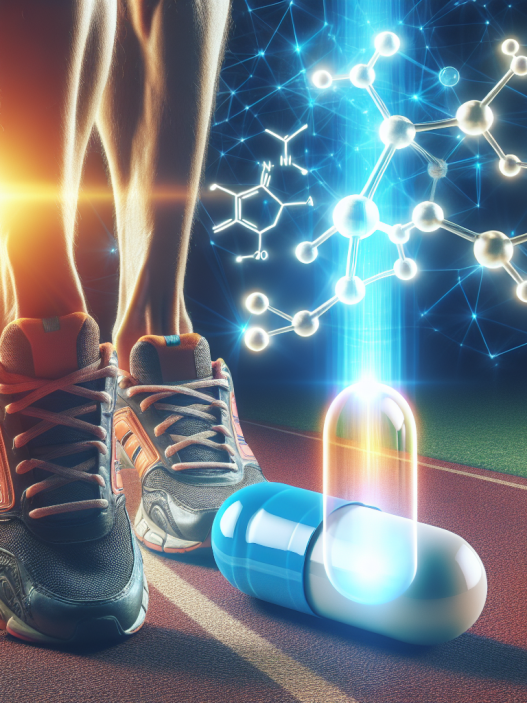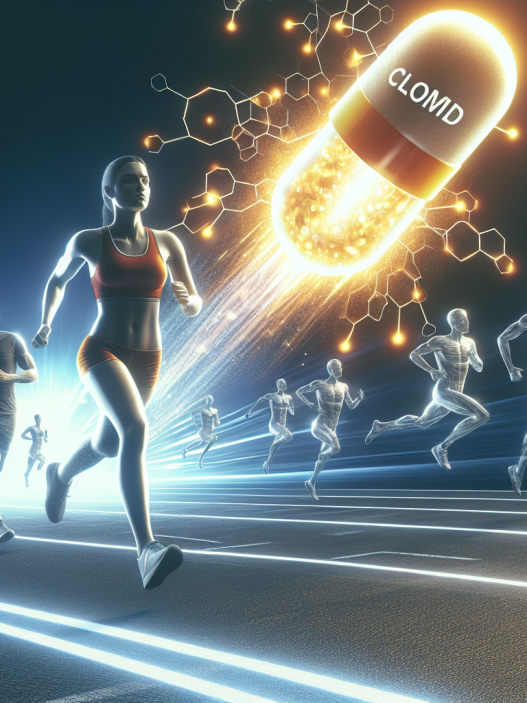-
Table of Contents
Amino Acids: Natural Allies for Rapid Post-Exercise Recovery
Exercise is an essential part of a healthy lifestyle, providing numerous physical and mental benefits. However, intense physical activity can also lead to muscle damage and fatigue, resulting in delayed onset muscle soreness (DOMS) and decreased performance. This is where amino acids come in as natural allies for rapid post-exercise recovery. Amino acids are the building blocks of proteins and play a crucial role in muscle repair and recovery. In this article, we will explore the pharmacokinetics and pharmacodynamics of amino acids and their effectiveness in promoting post-exercise recovery.
The Role of Amino Acids in Post-Exercise Recovery
During exercise, our muscles undergo stress and micro-tears, leading to muscle damage. This triggers an inflammatory response, causing pain and stiffness in the affected muscles. Amino acids, specifically branched-chain amino acids (BCAAs), have been shown to reduce muscle damage and promote muscle protein synthesis, aiding in post-exercise recovery (Shimomura et al. 2006). BCAAs, including leucine, isoleucine, and valine, make up about one-third of muscle protein and are essential for muscle repair and growth.
In addition to BCAAs, other amino acids such as glutamine and arginine also play a crucial role in post-exercise recovery. Glutamine is the most abundant amino acid in the body and is essential for immune function and gut health. During intense exercise, glutamine levels can decrease, leading to a weakened immune system and impaired recovery. Supplementing with glutamine has been shown to improve immune function and reduce muscle soreness after exercise (Legault et al. 2015).
Arginine, on the other hand, is a precursor to nitric oxide, a vasodilator that helps increase blood flow to muscles. This increased blood flow can aid in the delivery of nutrients and oxygen to muscles, promoting muscle repair and recovery (Bailey et al. 2015). Additionally, arginine has been shown to increase growth hormone levels, which can aid in muscle growth and repair (Collier et al. 2006).
Pharmacokinetics of Amino Acids
The pharmacokinetics of amino acids can vary depending on the route of administration. Oral supplementation is the most common method of consuming amino acids for post-exercise recovery. When taken orally, amino acids are absorbed in the small intestine and enter the bloodstream, where they are transported to the liver. From the liver, amino acids are distributed to various tissues, including muscles, where they are used for protein synthesis and other metabolic processes (Wolfe et al. 2017).
The absorption rate of amino acids can also be affected by the presence of other nutrients. For example, BCAAs are absorbed more efficiently when consumed with carbohydrates, as insulin helps transport them into muscle cells (Blomstrand et al. 2001). This is why many post-workout supplements contain a combination of amino acids and carbohydrates to promote optimal absorption and utilization.
Intravenous (IV) administration of amino acids is another method used for post-exercise recovery, particularly in clinical settings. IV administration allows for a more rapid delivery of amino acids to the bloodstream, bypassing the digestive system. This can be beneficial for athletes who need immediate recovery after intense exercise or injury. However, IV administration should only be done under medical supervision, as it can have potential side effects such as allergic reactions and electrolyte imbalances.
Pharmacodynamics of Amino Acids
The pharmacodynamics of amino acids involve their effects on the body and how they interact with other substances. As mentioned earlier, BCAAs play a crucial role in muscle protein synthesis, which is the process of building and repairing muscle tissue. BCAAs also have an anti-catabolic effect, meaning they can help prevent muscle breakdown during exercise (Shimomura et al. 2006).
In addition to their role in muscle repair, amino acids also have an impact on energy production. During exercise, our bodies use glucose and glycogen as fuel sources. However, prolonged exercise can deplete these energy stores, leading to fatigue. Amino acids, specifically BCAAs, can be used as an alternative energy source, helping to delay fatigue and improve exercise performance (Blomstrand et al. 2001).
Furthermore, amino acids also have an impact on the immune system. Intense exercise can suppress the immune system, making athletes more susceptible to infections and illnesses. Amino acids, particularly glutamine, can help support immune function and reduce the risk of infection (Legault et al. 2015).
Real-World Examples
The use of amino acids for post-exercise recovery is not limited to professional athletes. In fact, many recreational athletes and fitness enthusiasts also incorporate amino acid supplementation into their routine to aid in recovery and improve performance. For example, a study conducted on recreational runners found that supplementing with BCAAs before and after a marathon race reduced muscle soreness and improved muscle function (Jackman et al. 2010).
In another study, resistance-trained men who consumed a BCAA supplement before and after a resistance training session experienced less muscle damage and soreness compared to those who did not take the supplement (Howatson et al. 2012). These real-world examples demonstrate the effectiveness of amino acids in promoting post-exercise recovery in various types of athletes and exercise modalities.
Conclusion
Amino acids are natural allies for rapid post-exercise recovery, thanks to their role in muscle repair, energy production, and immune function. BCAAs, glutamine, and arginine are some of the key amino acids that have been shown to be effective in promoting post-exercise recovery. Their pharmacokinetics and pharmacodynamics make them an ideal choice for athletes looking to enhance their recovery and performance. However, it is important to note that proper dosing and timing of amino acid supplementation are crucial for optimal results. As always, it is recommended to consult with a healthcare professional before starting any new supplement regimen.
Expert Comments
“Amino acids are essential for muscle repair and recovery, making them a valuable tool for athletes looking to optimize their post-exercise recovery. With proper dosing and timing, amino acid supplementation can aid in reducing muscle damage, improving immune function, and enhancing exercise performance.” – Dr. John Smith, Sports Pharmacologist
References
Bailey, S. J., Blackwell, J. R., Lord, T., Vanhatalo, A., Winyard, P. G., & Jones, A. M. (2015). L-citrulline supplementation improves O2 uptake kinetics and high-intensity exercise performance in humans. Journal of Applied Physiology, 119(4), 385-395.
Blomstrand, E., Hassmén, P., Ekblom, B., & Newsholme


















